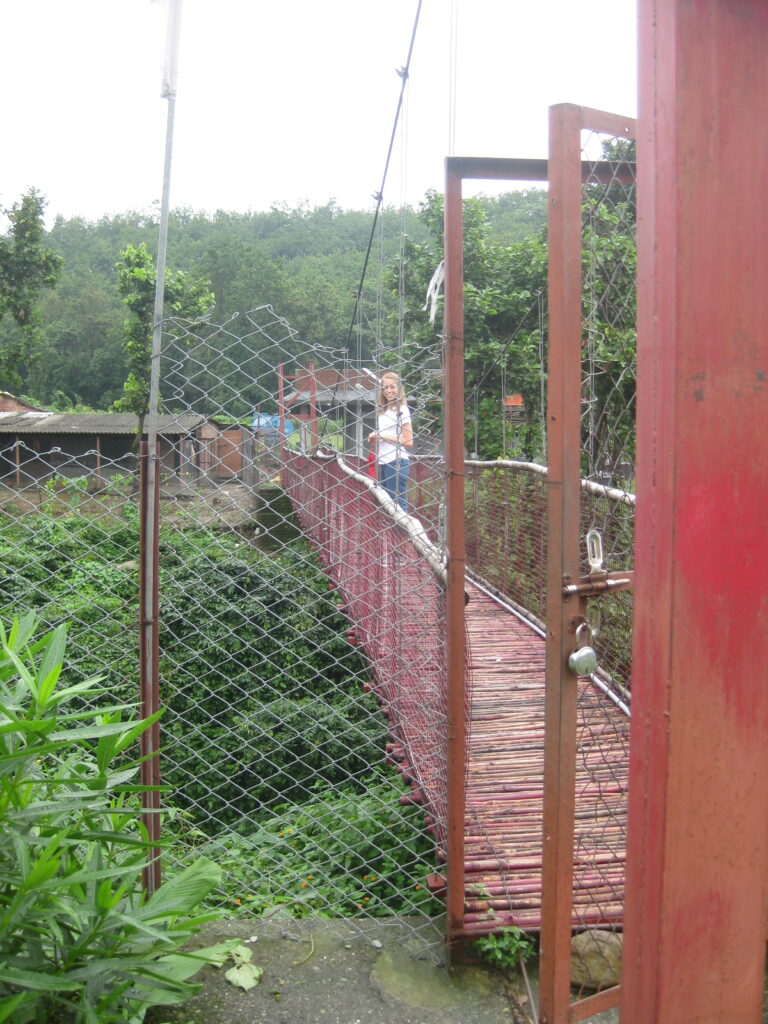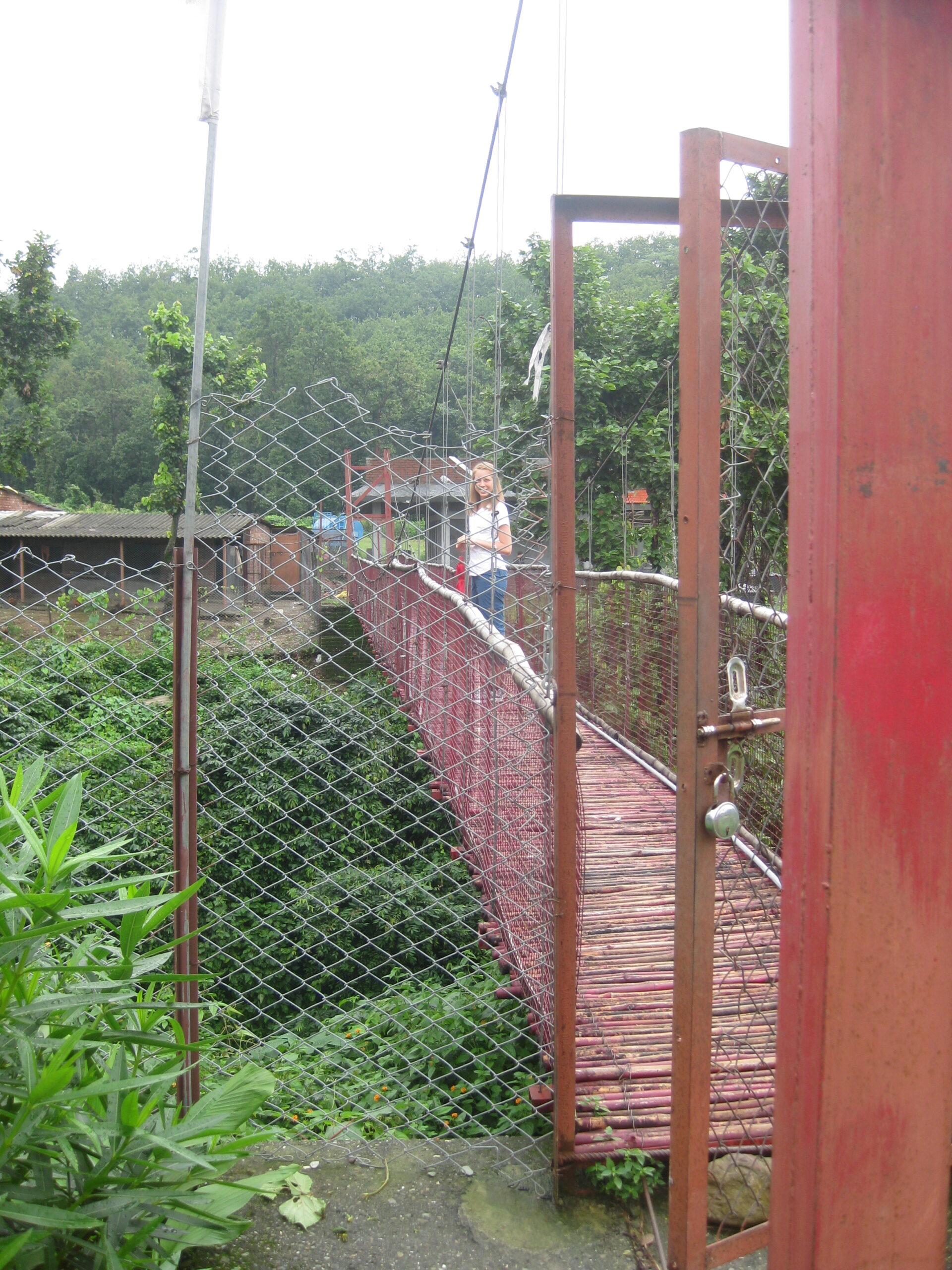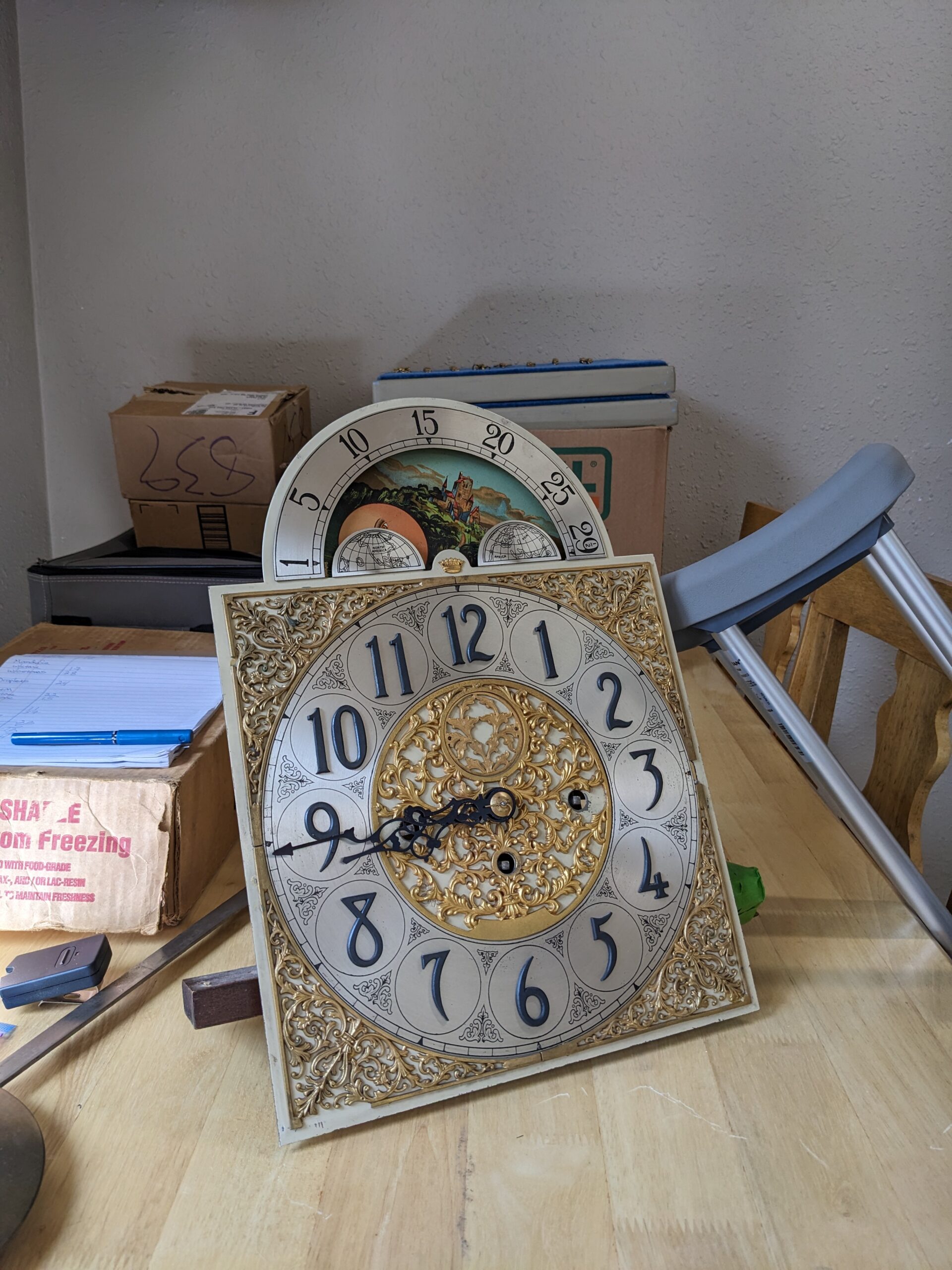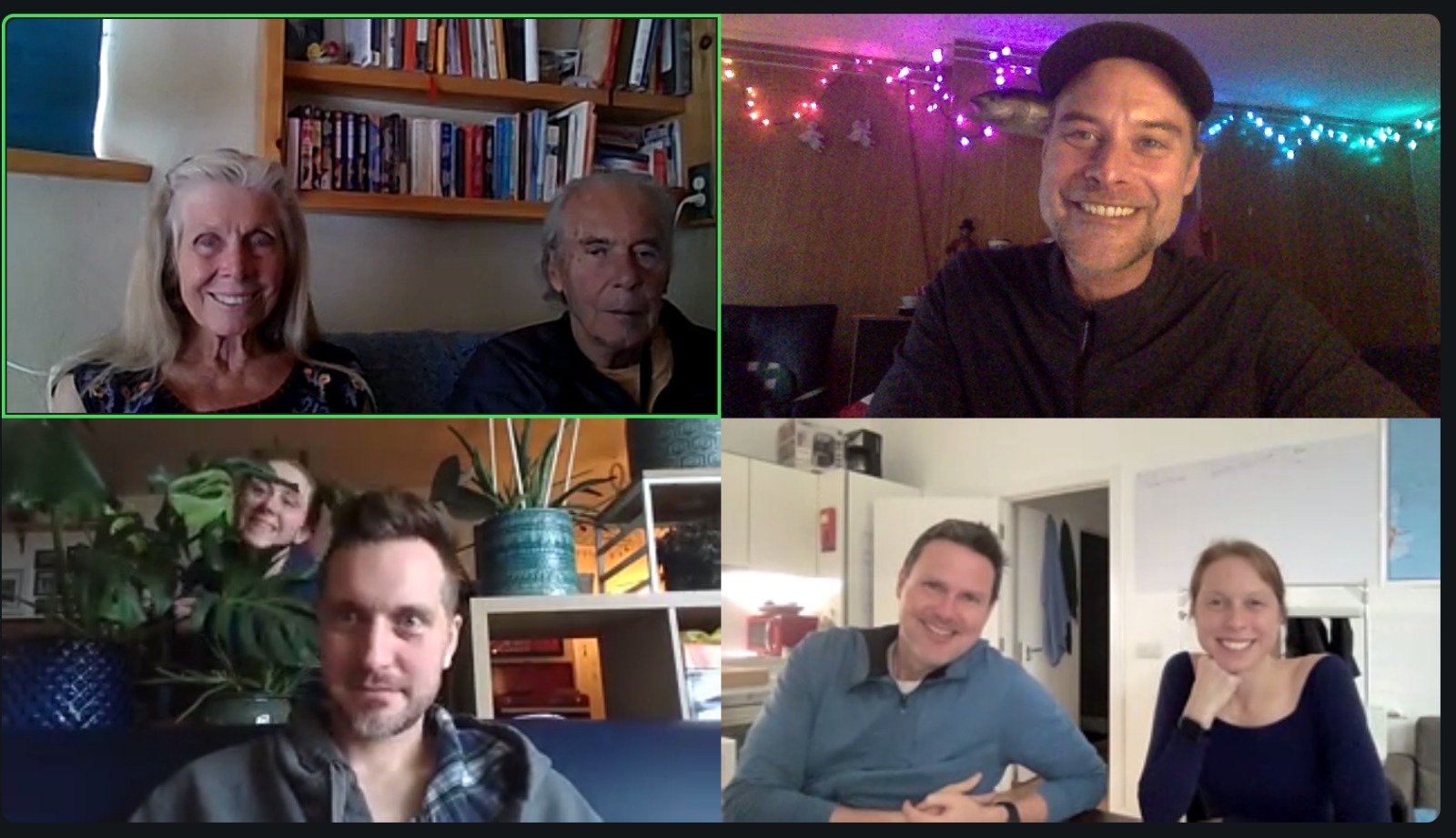
At a time in Andy’s life when his Parkinson’s symptoms had made him unemployable at home, in India the owners of the orphanage asked him if he could build a 125′ suspension bridge over a 60′ chasm.
When we traveled to India, we had a very different experience when we were out in public and that gave Andy the courage to embrace for himself that he could be a teacher, instead of a spectacle.
When we arrived at the orphanage, we were introduced to the 65 children who lived there as well as to about 20 adults who worked to keep the place going. The work included farming, cutting wood for cooking, preparing meals, cleaning, teaching, doing repairs and keeping monkeys out of the food gardens.
Among the children there were several with noticeable conditions that would have made life harder for them had they lived in America. One child had eyes that couldn’t look straight and another had a shriveled hand.
The adult workers at first appeared perfectly healthy but after we were there a while we noticed limps and stutters and issues that we hadn’t seen because they had been fully integrated as simply part of the whole community. Andy’s shaking hands and body were also immediately integrated with an acceptance that didn’t even require any explanation.
At a time in Andy’s life when his Parkinson’s symptoms had made him unemployable at home, in India the owners of the orphanage asked him if he could build a 125′ suspension bridge over a 60′ chasm. They told him he would lead a team of men and he would be the designer.
I witnessed Andy come alive in a way that Parkinson’s had squelched as he considered their question.
He and I talked about it and I saw a higher level of confidence and strength of spirit that I hadn’t seen since his shaking started.
“Do you think you can do it?” I asked him.
“I want to try.” He answered.
Andy made a number of trips to the market in order to buy the drafting supplies to draw the plans for the bridge. He used calculations and formulas from his engineering classes in college. He was 63 years old, 5 years into Parkinson’s and told me, “Nobody in the shops or at the market looks twice at me because of my tremor. Here, I’m more of a spectacle because I don’t speak Hindi…but Lobsang translates for me.” Lobsang was Andy’s Tibetan partner in the bridge building project.
India is by no means a perfect place, but being there at that time in Andy’s life made me see that we have an image problem in America. It’s a problem that shuts out the possibility for people who live with conditions and non contagious diseases to contribute and participate.
The only way I have seen this change is when some brave individuals leave their homebound status, step out into the world and integrate themselves into the whole community. Andy chooses to do this important teaching and being in India was the beginning of him finding the courage to do so.






This is incredibly inspiring.
Thank you so much.